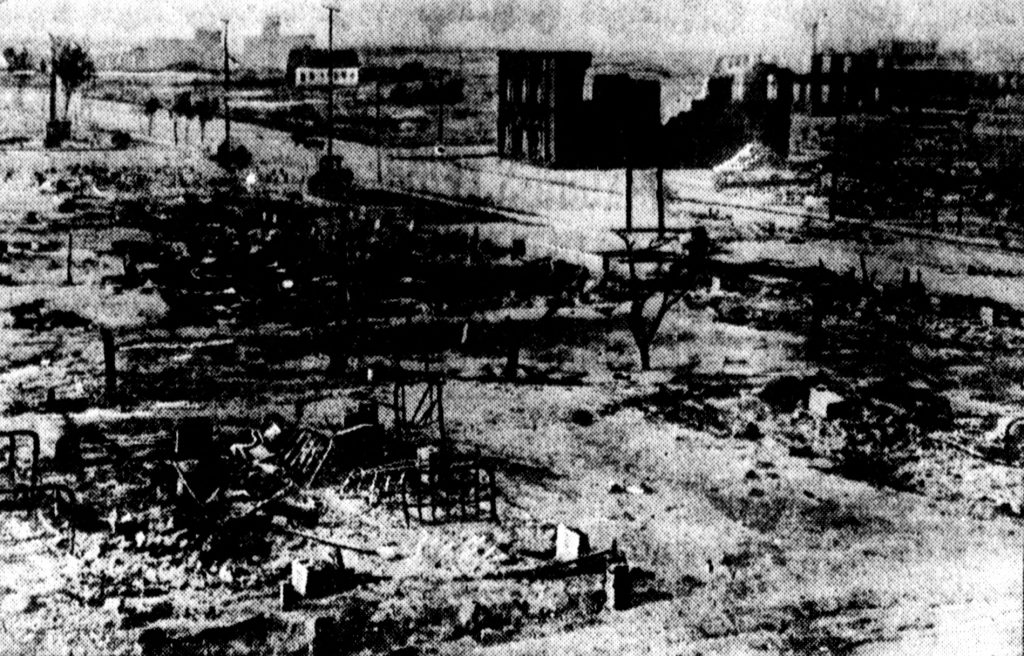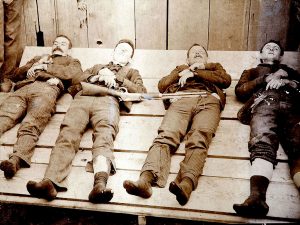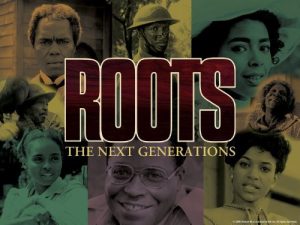Today Americans still debate what occurred between Dick Rowland and Sarah Page in the Drexel building elevator on downtown of Tulsa’s Main Street on May 30, 1921. Dr. Scott A. Ellsworth, a University of Michigan professor who teaches courses on African American history, Southern literature, and crime and justice in contemporary U.S. society, concludes that Rowland, to save himself from falling after tripping in an elevator on his way to the ‘colored’ bathroom, grabbed onto the first thing in his line of sight. That thing he caught happened to be the arm of a white elevator operator, Sarah Page.1
This encounter alarmed Page, causing her to scream. After hearing Page’s cry and seeing Rowland flee from the elevator, an unknown white store clerk called the police to report an attempted assault. The following day, May 31, police arrested 19-year-old Rowland based on accusations from both Ms. Page and the clerk. In none of the accounts studied today is there evidence that Rowland attempted to assault Page.2 Although we agree on this fact today, Tulsans at the time believed the rumors published by local newspapers that Rowland had attacked, and even attempted to rape Page, “scratching her hands and ripping her clothes.”3 This incident became the catalyst for one of the worst race riots in American history. And shockingly, this story does not usually appear in history textbooks.
Dick Rowland, born Jimmie Jones, lived with his two orphaned sisters in Vinita, Oklahoma during his childhood. Their birthplace is unknown. An African American woman by the name of Damie Ford informally adopted Jones by the time he was six years old. By 1909, Jones and Ford had moved to Tulsa to join Ford’s family, the Rowlands, where he then adopted their surname and chose his own first name, Dick.4

Greenwood in Tulsa, Oklahoma, established as a town in the early 1900s, still abided by the laws of Jim Crow and segregation even though it had a lot of independent African American economic activity.5 Rowland began his schooling in Tulsa, then later dropped out of Booker T. Washington High School at the age of 19 to work at a white-owned parlor as a shoe shiner. This behavior was not unusual seeing as a shoe shiner in Tulsa, whether African American or white, could get a tip anywhere from $1-$5, which was decent money in the early twentieth century. Greenwood district in Tulsa, with over 6,000 residents, black-owned businesses, schools, hospitals, newspapers, staffed with African American professionals, was one of the most prosperous African American communities in the country at the time.6

At approximately 3:15 PM on the day of Rowland’s trial, the Tulsa Tribune published and released the article “Nab Negro for Attacking Girl in Elevator” to the general public. At this time, the Tulsa Tribune was a Republican paper, edited and published since 1919 by the controversial racist Richard Lloyd Jones. This inflammatory article gave Rowland the pejorative nickname “Diamond Dick” and strongly implied that Rowland had raped Sarah Page. This issue also published an editorial warning titled “To Lynch a Negro Tonight,” which started the rumor that Rowland would be lynched that night. This rumor, in addition to others stirred up by the publishings of the Tulsa Tribune, fueled high emotion in the surrounding community.7 This build-up of concern, confusion, and anger ravaged the community and led to the gathering of armed white World War I veterans to rally for Rowland being put in jail, alongside African American locals anxious that the boy would be killed over a misunderstanding. The two groups gathered outside of the courthouse where Rowland’s case was held. Around 8:20 PM, the crowd grew, and so did the tension. Shots were fired, and twelve people were killed within the hour. These shots began a riot that would continue for the next sixteen hours.8
As witnesses later recounted the events of that night, they argued that the white rioters had forgotten about Dick Rowland entirely, and their motivation became to “settle for nothing less than scorched earth. They would not be satisfied to kill the Negroes, or to arrest them. They would also try to destroy every vestige of black prosperity.”9 The Tulsa Race Race Riot was the first race riot of its kind in America. The violence and vandalism resulted in upwards of 300 people killed, with most being African American. Even the goal of the Tulsa police on the night of May 31, was to “put down a negro uprising.”10 The police department, in tandem with local units of the National Guard, worked to disarm Greenwood residents and swept through the town.

By the afternoon of June 1, the vandalism escalated to burning down the neighborhood, and the city was placed under martial law.11 This stopped the physical violence, however, reverberations continued for years to come. More than 35 blocks, including 1,256 residences of the African American neighborhood of Greenwood in Tulsa had burned almost out of existence. Virtually every African American person from this area was now homeless, and the displaced were held in custody in internment centers. White rioters were sent home by police and National Guard, and were never held accountable for any destruction of the town.12
The case against Rowland was dismissed by September of 1921, accompanied by a letter from Sarah Page stating that she no longer wished to prosecute. Rowland, once exonerated, immediately left Tulsa, relocating to Kansas City.13
Greenwood’s economy came to a halt without the assistance of its African American counterparts. This inspired white employers to advocate for the release of the African American members of the community from the detention centers in hopes of regaining what they lost. White employers made arrangements to grant the African American citizens their freedom by issuing wearable green tags which, in order to be valid, needed to be signed by a white employer. On top of those stipulations, African American victims of the riot were expected to rebuild their community from scratch which inadvertently forced many to live in tent-cities. On top of that, the city refused to accept responsibility for the riot or for the reconstruction and blamed the mayhem on the African American residents of Greenwood.14
The white political and business leaders of Tulsa were ashamed once they recognized the reality of the unapologetic racism displayed by the white mobs during the night of which the destruction of the primarily African American portion of the city ensued. This realization led to the city beginning a reconstruction commission. This commission, however, tried to repurpose the land previously inhabited by the African American community rather than trying to restore it to its residential state. They planned to use the land as an industrial park or a railroad station, and passed strict building ordinances requiring the use of fireproof material.15 The cost of the requirements made the rebuilding of Greenwood nearly impossible for its African American residents. Members of the community, including lawyer Buck C. Franklin and his partners, challenged those ordinances, paving the way for African Americans to finally rebuild. The discussion of the rioting did not go much further than rebuilding.16
As time passed, the consciousness of the surrounding community developed further, more balanced reflection about the riot. It must be noted that not all members of the white community believed that Rowland committed those actions. Many white members of the NAACP later wondered why so many were ready to believe that Rowland attempted to rape or assault a woman in a crowded office building. Dick Rowland was said to have been arrested by two police officers, one white and one black. And while the officers conducted the investigation quietly, The Tulsa Tribune printed their article, intentionally portraying the incident with a skewed perspective.17
The riot was finally brought back into public discussion with a commission established in 1997. This commission recommended in 2001 that the Oklahoma legislature pay reparations to the African American members of the community, but the legislature declined. Since then, many efforts have been made to erase this event from American history. In the 1930s, when the 1921 issue of the Tulsa Tribune was microfilmed, someone conveniently removed the “To Lynch a Negro Tonight” editorial, and later someone found that the entire original bound volumes of the newspaper had been destroyed in attempt to cover up the racist, unaccredited perspective held by the Tulsa Tribune. Along with this, the Oklahoma Bureau of Vital Statistics officially documented about 40 deaths from the riot.18 In attempt to maintain white supremacy in the United States, those who tell the history need to reconstruct the narrative in order to hold others accountable for their racist actions. It is essential that stories such as this are not suppressed in history, so that we can not only understand how things occur, but why.
- Black Wall Street, The History Channel (1999), https://youtu.be/oJbF9SGB3Yk. ↵
- Scott Ellsworth, Death in a Promised Land: The Tulsa Race Riot of 1921 (Baton Rouge: LSU Press, 1992), 46-48. ↵
- Richard Lloyd Jones, “Nab Negro for Attacking Girl in Elevator,” The Tulsa Tribune (1921), 1-2 ↵
- Scott Ellsworth, “Tulsa’s Successful History,” Black Wall Street (2008), 1 ↵
- Griff Palmer, “Tulsa’s Greenwood Centre Was Once ‘Black Wall Street of the Southwest’,” The Daily Oklahoman, (1985). ↵
- Griff Palmer, “Tulsa’s Greenwood Centre Was Once ‘Black Wall Street of the Southwest’,” The Daily Oklahoman, (1985). ↵
- Vincent E. Miles, “Tulsa Oklahoma, Race Riot of 1921,” Encyclopedia of Race and Crime, Vol. 2 (2009), 814-817. ↵
- Oklahoma Historical Society, 2000, s.v. “Tulsa Race Riot.” ↵
- Adam Nossiter, “Something Tulsa Forgot,” New York Times (November 11, 2001). ↵
- William A. Darity, Jr., “Tulsa Riot,” International Encyclopedia of the Social Sciences, Vol. 8, 2nd ed. (2008), 465-466. ↵
- Tim Madigan, The Burning: Massacre, Destruction, and the Tulsa Race Riot of 1921 (Basingstoke: Macmillan, 2013). ↵
- Black Wall Street, The History Channel (1999), https://youtu.be/oJbF9SGB3Yk. ↵
- Scott Ellsworth, “Tulsa’s Successful History,” Black Wall Street (2008), 1 ↵
- Bill Reck, “ Race Riots,” Encyclopedia of Race and Racism, Vol 3 (2013), 358-360. ↵
- Black Wall Street, The History Channel (1999), https://youtu.be/oJbF9SGB3Yk. ↵
- Black Wall Street, The History Channel (1999), https://youtu.be/oJbF9SGB3Yk. ↵
- Alfred L. Brophy, “Tulsa, Oklahoma, Race Riot of 1921,” Encyclopedia of African American History, Vol. 3 (2010), 1059-1060. ↵
- Jim Yardley, “Panel Recommends Reparations In Long-Ignored Tulsa Race Riot,” New York Times, (February 5, 2000), 1-2. ↵



66 comments
John Cadena
Overall, a very well written piece. The structure of the piece allowed the reader to follow along with ease. When discussing a topic like this, its important to provide for a reader who might not know much about the topic critical information while maintaining the reader attention. This article did both.
John Cadena
Very descriptive. Hailey does a really good job of walking the reader through this time line of events. As I read through it, I imagined some of what was discussed in this weeks readings concerning the plotting of events that guide the narrative arc. A really great example of how that process works.
Scott Sleeter
I really pains me to read stories like this. This is not uncommon in American history. Blatant racism destroys communities, not just black ones. I like how the article points out how the white owned businesses were disrupted when the black owned businesses were destroyed. This really does a great job of showing the sprawling effects of actions taken with racist intentions.
Gabriel Cohen
Hey Hailey, awesome job on this article! You did a great job on this article, and great job on the nomination! This is a truly wrenching story, and i’m honestly surprised I hadn’t heard of it before. You did a great job with the structure of the story as well!
Edgar Velazquez Reynald
Thank you so much for this article. I was previously aware of these riots and how prosperous the “Black Wall Street” was, but many aren’t. The more people who learn about this the better. It’s enraging (albeit not surprising) how out of their way Tulsa went to try to erase these events from history. I hope more people continue to unearth these events so that it can be unburied. Your article helps that to happen.
Danielle A. Garza
This is the first time I heard of the Tulsa Race Riots and I am very glad that I know now. Thank you for showing your insight on the matter. I enjoyed all the facts and evidence you gave to tell your story. I know what you may have been trying to do from moving from one time period to somewhat of a flash back, but it does seem at times kind of jumpy. I feel it could be fixed easily with some dates or time frames when one moves back and forth.
Lindsey Wieck
Hailey, this article is now a required reading in my graduate Advanced Public History methods course!
Sara Ramirez
Hailey, great article and I agree with your lesson throughout that these are the stories we need to be taught in schools. The destruction of the racist editorial in the Tulsa Tribune is very shameful. As a society, we need to be better about owning up to our wrongdoings so that history doesn’t repeat itself. Thankfully Dick Rowland did not lose his life over a wrongful conviction. Unfortunately the same thing can’t be said for many other African Americans such as the heartbreaking case of Emmett Till.
Mario Sosa
Indeed it is crazy to see how one small misunderstanding destroyed one of the most flourishing African-American communities practically overnight. It seems as though a lot of those white rioters were only using Rowland as an excuse to go after African-Americans. When such an event caused so much destruction leading to martial law, it makes it all the more puzzling as to why it is never talked about in schools.
Mario Sosa
Indeed it is crazy to see how one small misunderstanding destroyed one of the most flourishing African-American communities practically overnight. It seems as though a lot of those white rioters were only using Dick Rowland’s case as an excuse to go after African-Americans. When such an event caused so much destruction leading to martial law, it makes it all the more puzzling as to why it is never talked about in schools.